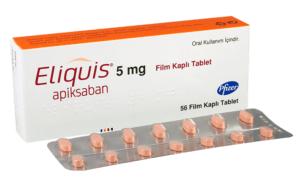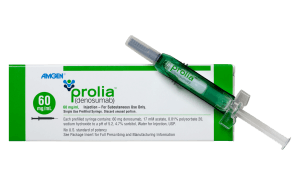A natural question has arisen. “If they have such great benefits and are so popular, why do people stop taking Ozempic, Mounjaro and Wegovy?” Ozempic and Mounjaro are considered “wonder drugs” out of all the treatments for type 2 diabetes, which have brought significant benefits to millions of people worldwide who develop type 2 diabetes and caused shortages across the globe. Wegovy is a stronger version of Ozempic, which promotes weight loss for people who are overweight or obese
Much context is needed to understand how people may get to the point where they are opting to stop taking Ozempic for diabetes care. We will summarize the most salient points in a short timeline. For more detailed information on each point, please refer to the Frequently Answered Questions below, which explain exactly how it came to be that such a popular treatment for people living with type 2 diabetes is now being rejected or discontinued.
- 2012 – Pharma conglomerate Novo Nordisk discovered semaglutide in its search for a treatment for type 2 diabetes
- 2017 – Novo Nordisk received approval from the FDA for Ozempic, a weekly injectable medication using semaglutide, to be prescribed for adults with type 2 diabetes
- 2017-2018 – Patients receiving Ozempic reported that they noticed significant weight loss
- 2018 – Novo Nordisk conducted a study (STEP 1) into how semaglutide induces weight loss. The study strongly supported using semaglutide (in higher strength than in Ozempic) to promote weight loss in clinically obese adults.
- 2021 – Novo Nordisk received approval from the FDA for Wegovy, a weekly injectable medication using semaglutide to be prescribed for clinically obese adults. Other drugs based on GLP-1 receptor agonists, such as Mounjaro, followed onto the market in 2022 and 2023.
- Between 2018 – 2021, doctors started prescribing Ozempic off-label for weight loss for non-diabetic patients.
- Around 2020, demand for Ozempic started to exceed supply, but this coincided with the COVID-19 pandemic, and production of Ozempic couldn’t be boosted enough to keep up.
- 2021/2022 – patients with diabetes were unable to get Ozempic through normal supply channels, mainly because supplies were being used by people wanting it for weight loss.
- 2021/2022 – retail prices of Ozempic rose sharply due to competition between buyers. The list price of Ozempic is currently around $1000 per month, for Mounjaro it’s about $1400, and for Wegovy, it is $1600 .
- Currently, most insurance plans do not accept GLP-1 receptor agonists treatments when prescribed for weight loss. Patients have to pay the full list price and this is one main reason they may decide to stop taking them.
Why do people stop taking GLP-1 weight loss medications?
Although it is a matter of individual choice, enough people have decided to terminate their course of treatment with Ozempic and switch to other diabetes medications to make it worthwhile trying to understand the root causes. Without the benefit of a formal study, we can speculate the main reasons based on anecdotal reports:
- Lack of availability. Shortages of Ozempic persisted all through 2022 and the first half of 2023. But supplies of Ozempic and Wegovy are returning to normal, so patients can confidently switch back, after having had their confidence in the drug destroyed.
- Fear of “Ozempic rebound,” in which people stop losing weight and some of the weight lost while on the treatment was regained as soon as the drug was stopped. Unless there is continuing diet and exercise, weight will be regained once the treatment is stopped.
- High costs, especially for non-diabetic patients, but remember that IsraelPharm has sold Ozempic at a more affordable cost through the market upheavals of the past three years. Our price is less than half even the best-uninsured price in the US.
- The side effects of semaglutide, but these are no more serious than for other medicines.
Frequently Asked Questions
What is Ozempic?
Ozempic is built on the generic drug semaglutide, a drug with a ten-year history in groundbreaking new treatments for diabetes. Diabetes is a disease that affects millions of people in the US, and it can have very severe effects if left untreated. Its primary cause is the lack of control of glucose levels in the blood. In healthy people, glucose levels are monitored and controlled by the endocrine hormones of the pancreas, which injects the required quantity of insulin into the bloodstream when glucose levels rise after eating. When the pancreas fails to detect the glucose or can’t produce enough insulin in people with type 2 diabetes, glucose levels will rise and start to cause damage throughout the body.
How does semaglutide work?
Semaglutide was first developed in 2012 by the pharmaceutical company Novo Nordisk. The company’s researchers focused on finding new ways to treat type 2 diabetes, a global health issue affecting millions.
Like all warm-blooded animals, humans produce a glucagon-like peptide-1 (GLP-1) hormone, which is released into the bloodstream after food consumption. The role of GLP-1 is to control blood sugar levels. It stimulates the pancreas to produce insulin, the hormone that aids glucose absorption from the bloodstream into cells, where it’s metabolized to produce energy. GLP-1 also suppresses the release of glucagon, another hormone that signals the liver to release more sugar.
While there is no known cure for diabetes, there are ways to mitigate the effects of the disease, either by strict control of the diet in cases of milder diabetes where the pancreas is partially functional or by using insulin therapy to boost insulin levels artificially through oral medication or injections.
Semaglutide acts as a GLP-1 receptor agonist. The term “agonist” indicates that the chemical imitates the actions of the body’s natural chemical. Thus, a GLP-1 receptor agonist stimulates insulin production naturally and suppresses the release of more sugar from the liver.
Semaglutide is also designed to resist the body’s normal breakdown process, meaning it stays active in the body for longer than naturally occurring GLP-1. This has specific benefits because it allows the drug to be administered weekly rather than the daily doses of insulin that were the norm before semaglutide came along. In this way, semaglutide helps maintain stable blood sugar levels for a whole week for individuals with diabetes.
How does Ozempic treat diabetes?
In 2017, Novo Nordisk received regulatory approval for using its form of semaglutide, now branded as Ozempic, for treating type 2 diabetes. Its efficacy and safety were firmly established through comprehensive clinical trials.
The benefits of using Ozempic for treating diabetes were quite marked. In the first place, instead of patients requiring daily administration of either tablets or insulin injections, Ozempic delivers a measured dose that can be self-administered in a weekly injection. This removes some of the most serious disadvantages of the other routes for treating type 2 diabetes:
- Overdosing on insulin by repeating doses accidentally or administering the wrong strength can send a person into hypoglycemic shock, which can have extremely severe outcomes, like brain bleeds, heart attack, and reduced cognitive functions.
- Missing or incorrectly administering scheduled doses can have the opposite but equally serious outcome of hyperglycemia, in which blood sugar levels climb too high. In this state, a person can slip into a coma or suffer a seizure, retinal damage, myocardial infarction, or even die as a result of diabetic ketoacidosis, which is an acute life-threatening complication of untreated diabetes.
Ozempic very quickly became one of the leading treatments for type 2 diabetes, both for the direct benefits that GLP-1 agonists can deliver compared to the direct administration of insulin and also because it is a far safer and more convenient way for people to treat the condition themselves.
However, the story of Ozempic didn’t stop there. As more and more patients with diabetes began using Ozempic, they started to report back to their healthcare providers that, along with an improvement in blood sugar levels, they were also experiencing significant weight loss. It wasn’t just a matter of losing a pound or two, but most of them were enjoying substantial weight loss and shrinking waistlines.
What made semaglutide famous for weight loss?
In 2018, Novo Nordisk initiated a full investigation to find out if semaglutide could also be used to treat clinical obesity, which affects more than half-a-billion adults globally and more than half the US adult population.
The trials were known as Semaglutide Treatment Effect in People or STEP 1. Its core objective was to determine the average weight gain or loss experienced by subjects administered with semaglutide for thirty months. Participants selected had to be obese adults with a body mass index (BMI) of 27-30 kg/m2 and at least one weight-related health issue (diabetes, heart disease, etc.) or higher than 30 kg/m2. All participants had to have had at least one unsuccessful attempt at weight loss through controlled diets.
Participants were divided into two groups: a control group that received a placebo and another group that received semaglutide. Both groups were instructed to follow the same healthy diet and physical exercise routines. STEP 1 was a “double-blind” study in which neither the participants nor the medical staff overseeing the trial knew whether a participant received the placebo or the actual drug.
The results of STEP 1 were very successful. The participants that received semaglutide lost significantly more weight than those who received a placebo. This weight loss persisted over the entire term of the study, which differed from many other studies into obesity treatment, where maintaining weight loss was often difficult.
At the end of the trial, Novo Nordisk applied for, and in 2021 was granted, approval for a new form of semaglutide, now branded as Wegovy. The main difference between Ozempic and Wegovy is the dosage. Ozempic is limited to 1 mg maximum per weekly dose. Wegovy can deliver 2.7 mg per dose, the dosage on which the STEP 1 trial was based.
What happens when obese people stop taking GLP-1 weight loss medication?
There was a follow-up study after STEP 1 to monitor how well people were sustaining weight loss. In most cases, people reported that in the year following the end of the trial, they had gained between one-half and two-thirds of the weight they had lost. The term given for this is “Ozempic rebound.” The most likely reason given was that people had returned to regular eating habits after being on strictly controlled diets for the duration of STEP 1. One of the trial’s stipulations was that people would also follow a moderate exercise program.
The general conclusion was that semaglutide works exceptionally well to promote weight loss. However, there still needs to be ongoing control of the diet and lifestyle of chronically obese people to sustain the gains achieved.
If Ozempic was not designed for weight loss, why is it being prescribed for this?
Throughout the five intervening years from when Ozempic was first released for diabetes and up to the release of Wegovy, the word got out that Ozempic could deliver the same weight-loss benefits for non-diabetics as it was showing for diabetics. Doctors were swamped with requests from overweight patients for Ozempic. Hundreds of thousands of off-label scripts were written as more and more doctors became aware of the unique ability of Ozempic to produce dramatic and sustainable weight reductions for their patients.
Unfortunately, the new demand for Ozempic coincided with the global disruptions to manufacturing and goods movement brought about by the COVID-19 pandemic. All over the world, factories ran out of raw materials and labor resources, and even those that could maintain output found that moving their production to distribution points was becoming increasingly complex and expensive.
So, the net result of this was phenomenal demand for Ozempic, but there was no way supply could keep up. This had two negative impacts that resulted in the decision to stop taking Ozempic:
- People who were being prescribed Ozempic for the treatment of diabetes need the drug to prevent type 2 diabetes getting worse and so avoid serious outcomes. More and more diabetic patients had to switch to other less effective medications simply because a large proportion of available semaglutide was being sold to other consumers.
- Prices for the drug started to increase sharply as competing buyers bid against each other to get their hands on sufficient supply.
How much does Ozempic cost diabetic patients?
The out-of-pocket cost of Ozempic depends heavily on the type and level of insurance that the person for whom it was prescribed has. However, in almost all insurance plans, Ozempic is accepted as a valid treatment for type 2 diabetes, and the insurance company subsidizes between 50 and 90 percent of the manufacturer’s recommended retail.
The actual cost can be as low as $50-$60 per month, ranging in extreme cases to $300-$400. Patients on Medicare/Medicaid can also benefit from the heavily subsidized drug prices; in some cases, patients only have to pay the first $25.
How much do obese patients pay for Wegovy?
Most insurance companies don’t yet cover the costs of weight-loss medications like Wegovy, even when they have been accepted by the FDA for that purpose. As a result, patients pay close to the list price ($1000 for Ozempic off-label, $1600 for Wegovy). Some pharmacy chains offer discounts to members or accept coupons for discounting. The average discounted retail price of Ozempic in June 2023 was around $850. Mounjaro can cost around $1000 if coupons or chain discounts apply.
Over the active life of Ozempic, at IsraelPharm we have been able to offer regular supplies at heavily discounted prices. Currently, our price for an Ozempic one-month pen of any strength is $399. This represents a discount of more than 50% on even the best non-coupon retail price from US pharmacies.
















